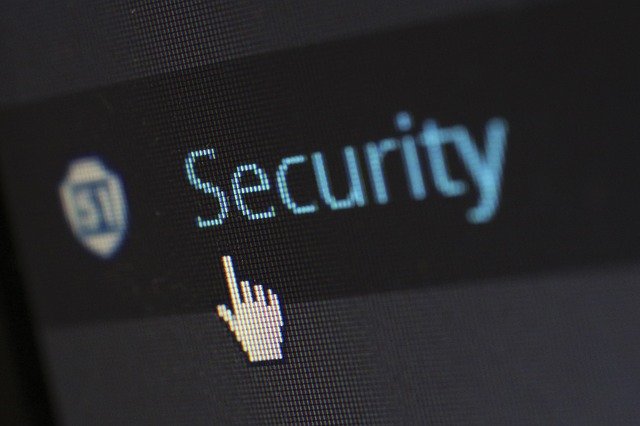Ransomware is a serious threat to businesses, and it’s getting worse. While individuals were struggling against such attacks, fraudsters went a step further and started offering ransomware-as-a-service (RaaS). Through this business model, cybercriminals offer a malicious kit that can be used to perform ransomware attack services at little or no cost.
Ransomware is becoming a major concern worldwide, with 54% of organizations surveyed being attacked in 2017 and another 31% expected to be attacked in the future. In 2021, these attacks increased dramatically.
What is ransomware as a service (RaaS) and why is it such a big threat?
Ransomware is a type of malware that encrypts files and locks them, making decryption nearly impossible without a key or by exploiting vulnerabilities in the encryption implementation.
Ransomware as a service (RaaS) is a subscription-based model that allows affiliates to run them using pre-developed ransomware tools. Each successful ransomware payment earns affiliates a commission. RaaS allows anyone, even if they have no technical expertise, to launch attacks by simply subscribing to a service. They are readily available on the dark web, where they are advertised in the same way as legal products. Since RaaS users do not need to have any knowledge, or even experience, to use the tool effectively, RaaS solutions allow even the most inexperienced hackers to carry out very intricate cyberattacks.
Not only is ransomware cheap to buy and download, it is also simple to spread, making any organization a target in today’s digital world.
Ransomware is becoming increasingly expensive to pay, which means that this type of attack is becoming more and more profitable for attackers. In addition, ransomware developers now sell their product to affiliates who use it to blackmail companies. RaaS reduces the risk to ransomware developers by eliminating the need for them to carry out attacks.
In fact, the rise of RaaS platforms is undoubtedly one of the main causes of the massive increase in ransomware attacks. RaaS also results in faster payout than the theft of personal or credit card information. More importantly, because of Bitcoin’s anonymity, there is less chance of being discovered.
Hundreds of thousands of systems have been affected by ransomware in the past 12 months, resulting in the expenditure of countless dollars to recover lost files, expenses to increase security measures, and reputational damage.
Several government authorities, including the FBI, advise against paying the ransom so as not to encourage the ransomware cycle. In addition, 50% of people who pay the ransom are susceptible to being targeted again.
How does ransomware-as-a-service work?
- A ransomware developer writes unique exploit code, which is then licensed to a ransomware affiliate in exchange for a fee or a share of the attack revenue.
- The affiliate inserts the custom exploit code into the hosting site.
- The affiliate identifies and targets an infection vector, and then distributes the attack code to the victim (e.g., via email or a malicious link).
- The victim goes to the website or clicks on the link.
- The ransomware is downloaded to the victim’s computer and executed.
- The ransomware encrypts the victim’s files, locates more targets on the network, adjusts system settings to ensure persistence, disrupts or destroys data backups, and hides its trail.
- The victim receives a ransom note and is asked to pay the ransom in untraceable funds, usually cryptocurrencies.
- The money will be moved through various transformations by a money launderer in order to hide the identities of the affiliate and the ransomware developer.
- Once the ransom is paid, the ransomware affiliate can send a decryptor to the victim. The affiliate may place additional demands on the victim, or it could do nothing and leave the victim with the encrypted files.
The most infamous ransomware threats:
Here are some of the most well-known ransomware-as-a-service: Satan, Netwalker, Cerber, Egregor, Hostman, WannaCry, Philadelphia, MacRansom, Atom, FLUX, Tox, REvil, Ryuk, Encryptor, Fakben, ORX Locker, Alpha Locker, Hidden Tear, Janus, Ransom3.
There are several reasons why ransomware has become so pervasive.
- Companies are unconcerned about the threats. There are several warnings about potential threats, as well as a considerable amount of advice on how to defend against them. Users and companies, on the other hand, do not protect their systems and servers as they should, and as a result, they get infected.
- Security researchers must devote a significant amount of effort to solving the problem and decrypting the data that has been compromised. And for many companies, it is much easier to pay the ransom and get back in business than to wait.
How to defend against ransomware?
The most effective method for mitigating ransomware attacks combines staff education, implementation of defenses and constant monitoring of vulnerabilities in your ecosystem.
- EDUCATE STAFF AND END USERS.
Staff must be educated on how to recognize phishing attacks. It is also important to provide extensive social engineering training to your staff and end customers.
- USE A SECURITY SUITE YOU CAN TRUST
You should install reliable anti-malware software on your PC to defend against this malicious threat. These intelligent tools employ powerful algorithms to detect and, in some situations, eliminate ransomware threats. In addition, they operate automatically in the background to protect against malware attacks 24/7.
- BACK UP YOUR DATA
Any ransomware attack is designed to attack users’ sensitive and important data. Therefore, it is essential to have a backup of your critical data on hand in case it becomes necessary. For added security, you can back up your data to external drives or cloud servers. If you follow this simple step, you will be able to recover your data in the event of an attack.
- KEEP YOUR SYSTEM SOFTWARE UP TO DATE.
In general, cybercriminals look for known bugs in the software that runs your system. Therefore, keeping your system software up to date will provide you with increased security against all existing and emerging cyber threats. Bug fixes, security patches and other beneficial features are included in every software update. In addition to installing system software updates, you should keep all apps on your device up to date to enhance security.
- AVOID INSECURE LINKS AND ATTACHMENTS.
As mentioned above, cybercriminals prefer to attack people through phishing emails and exploit kits. Therefore, avoiding suspicious and unknown links and attachments will save you from danger. If necessary, you can use your anti-malware program to scan the attachment before opening it.
#cybercriminals #phishing #ransomware


Comentarios recientes